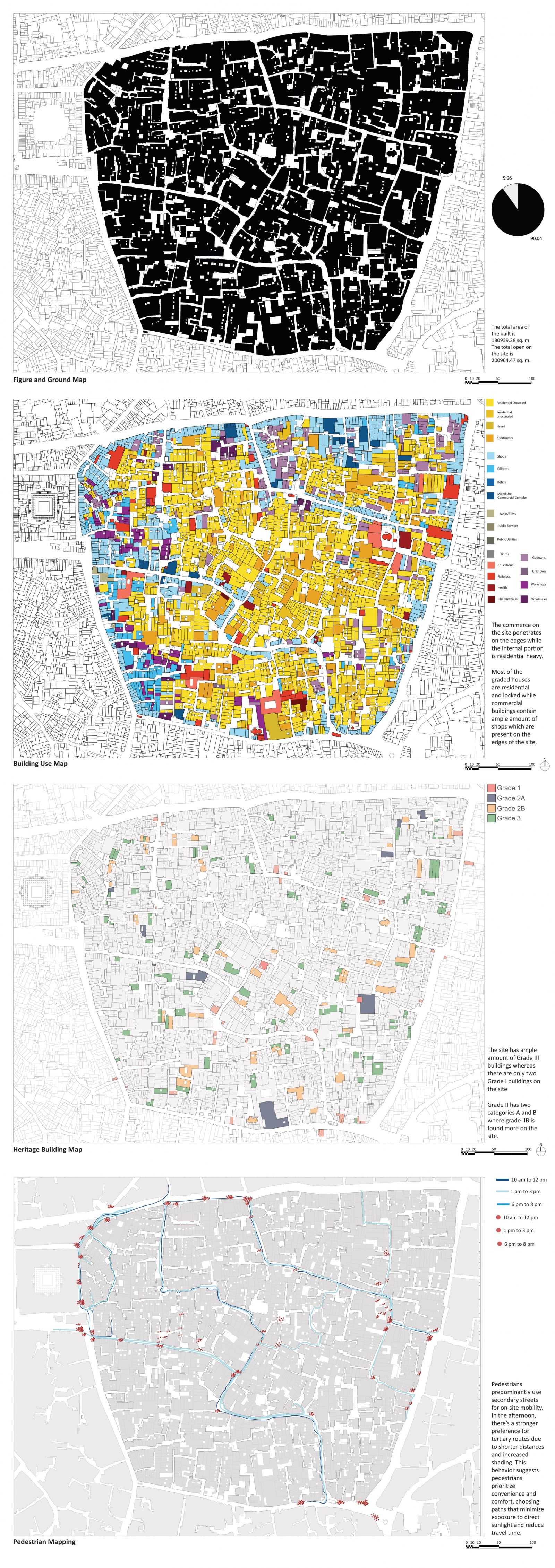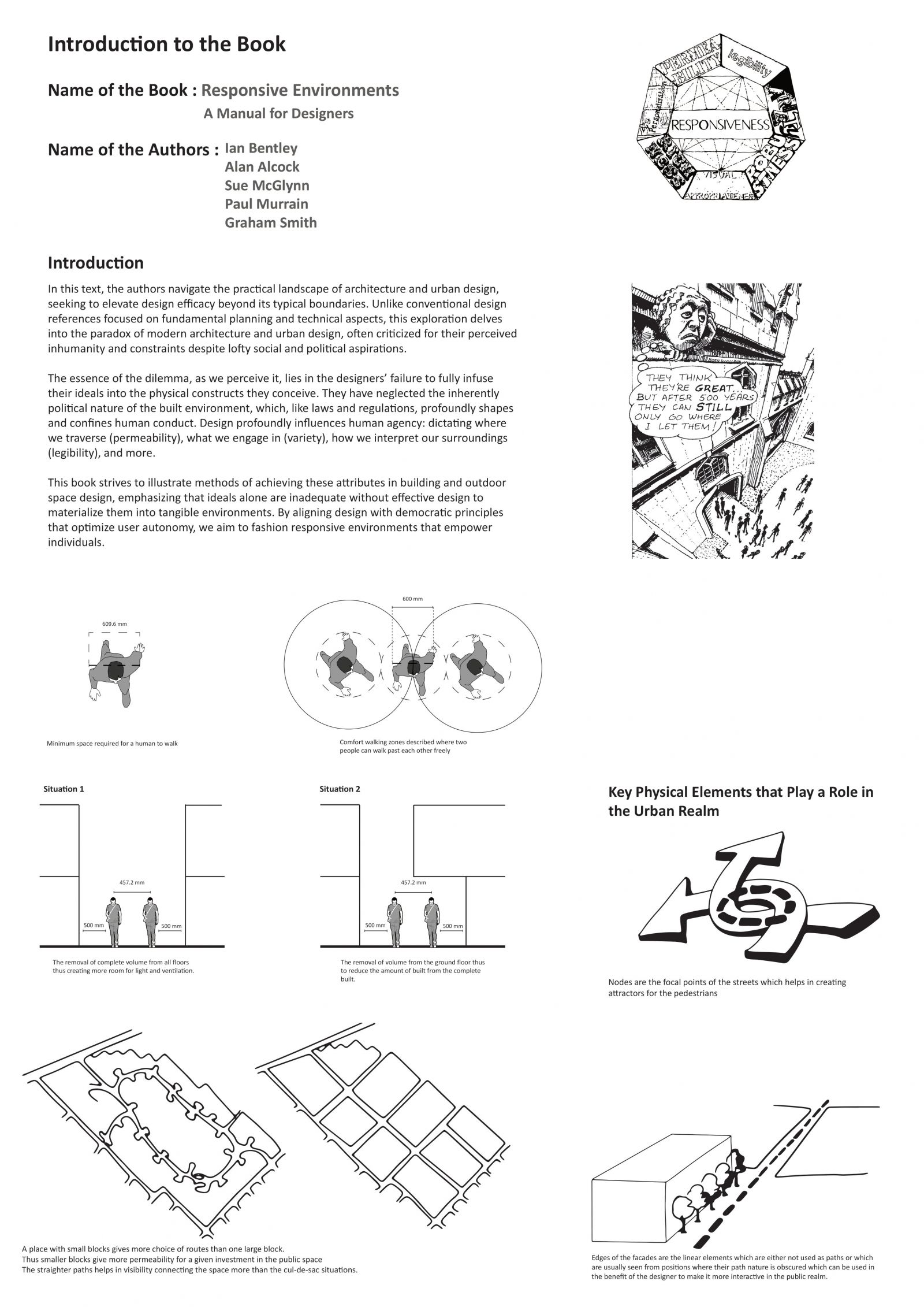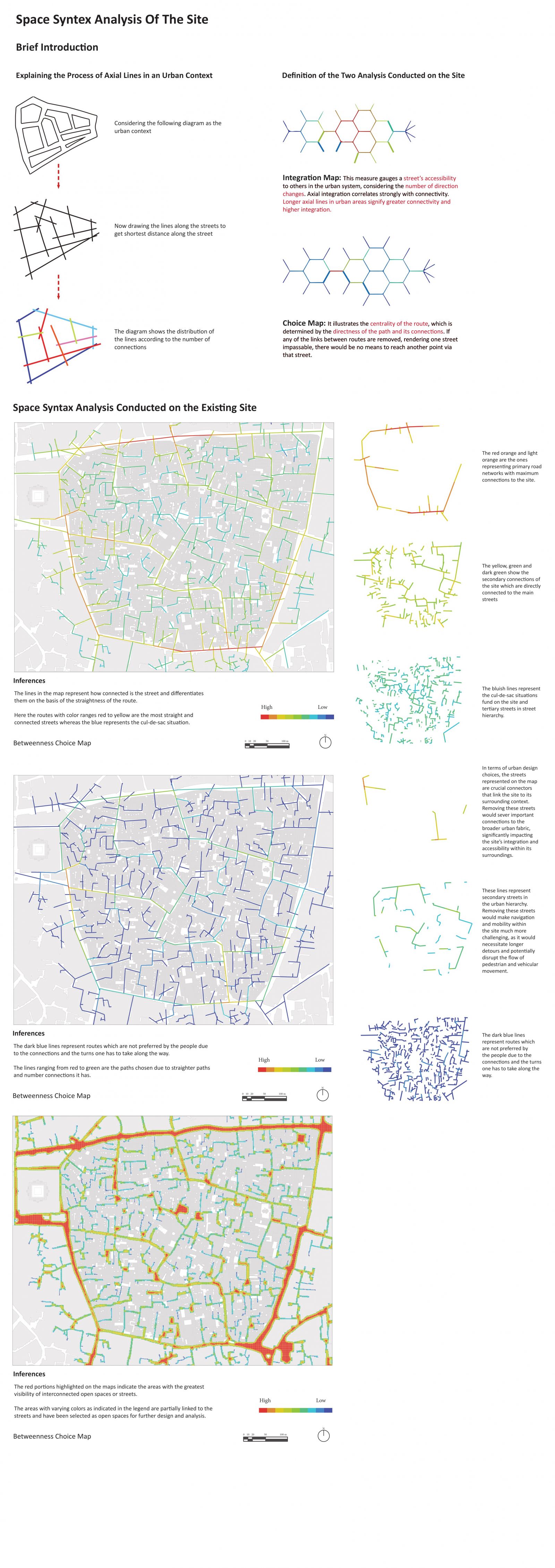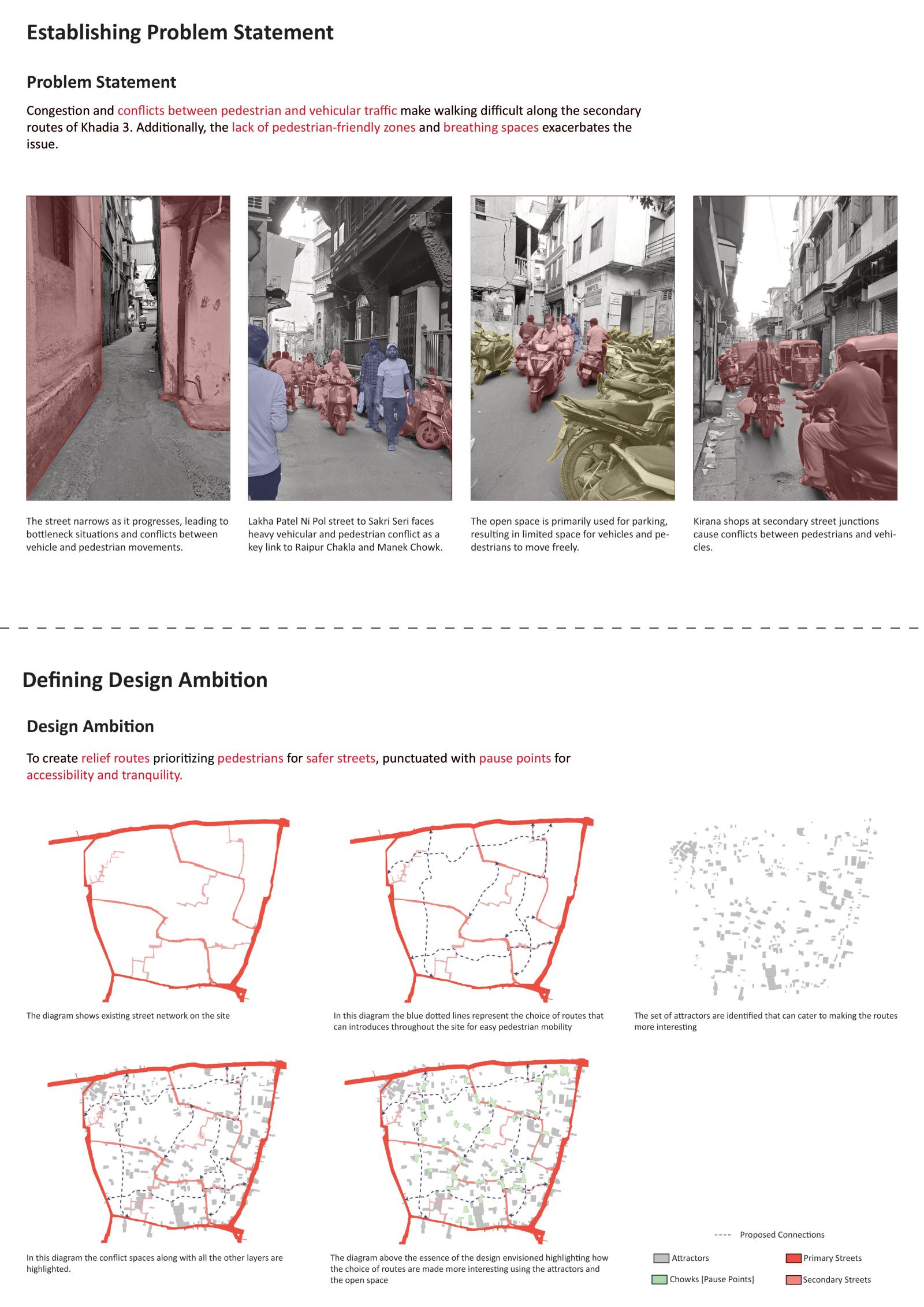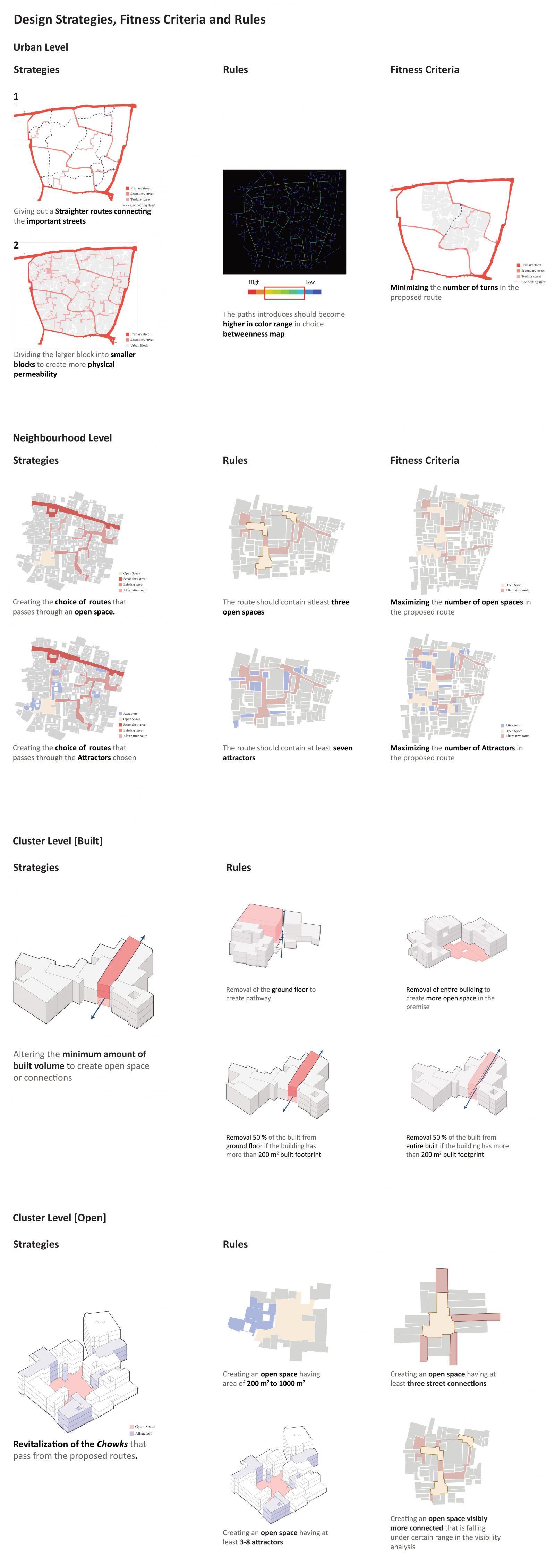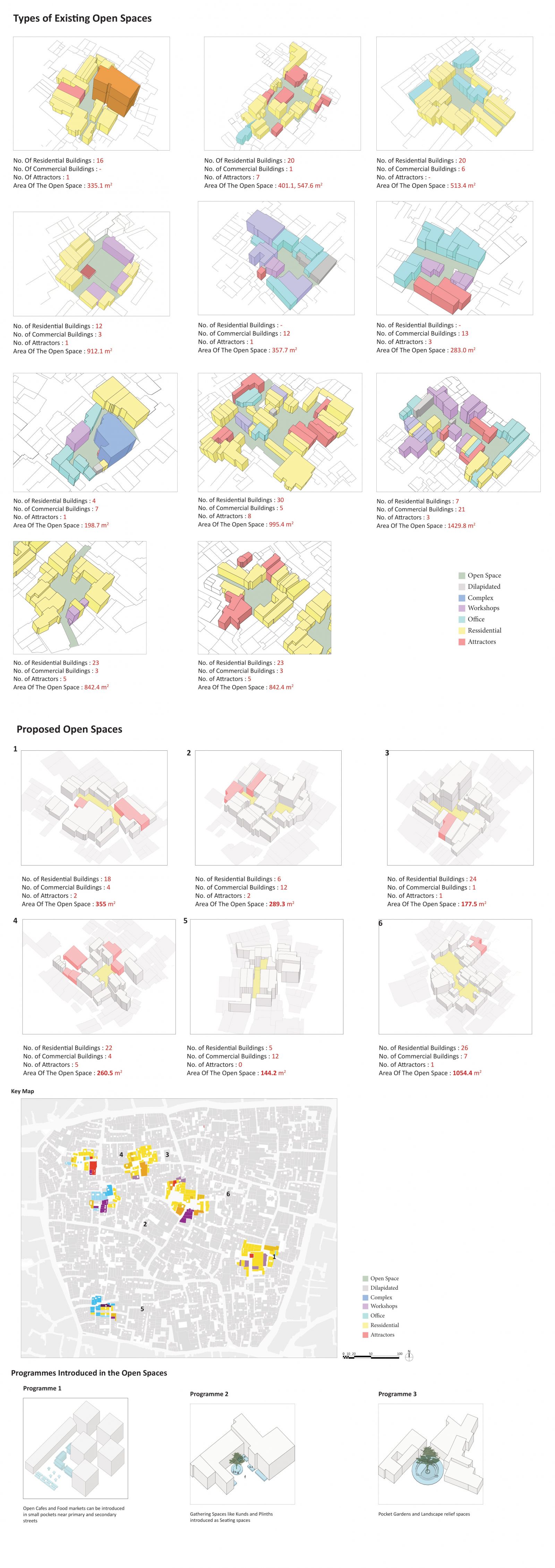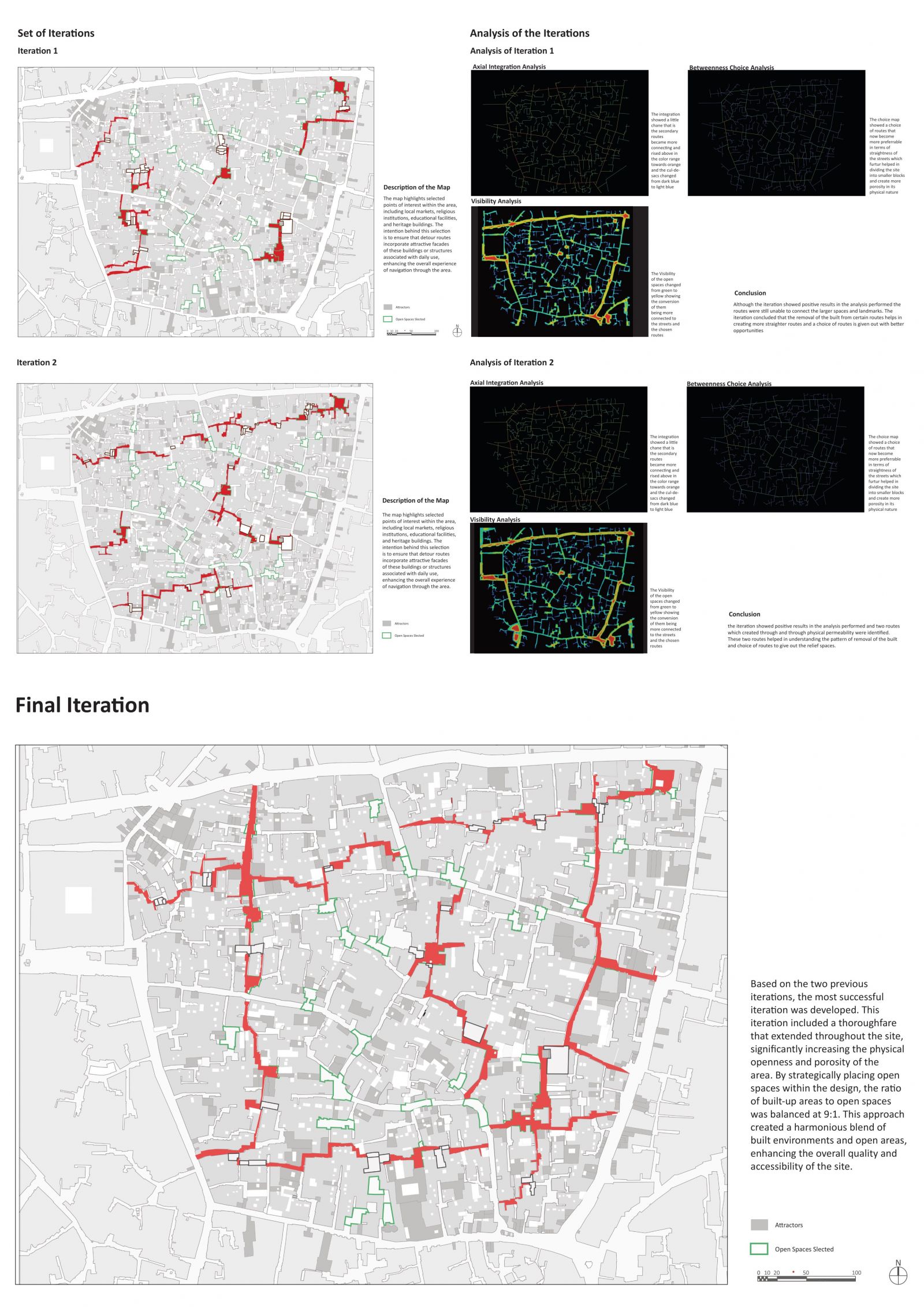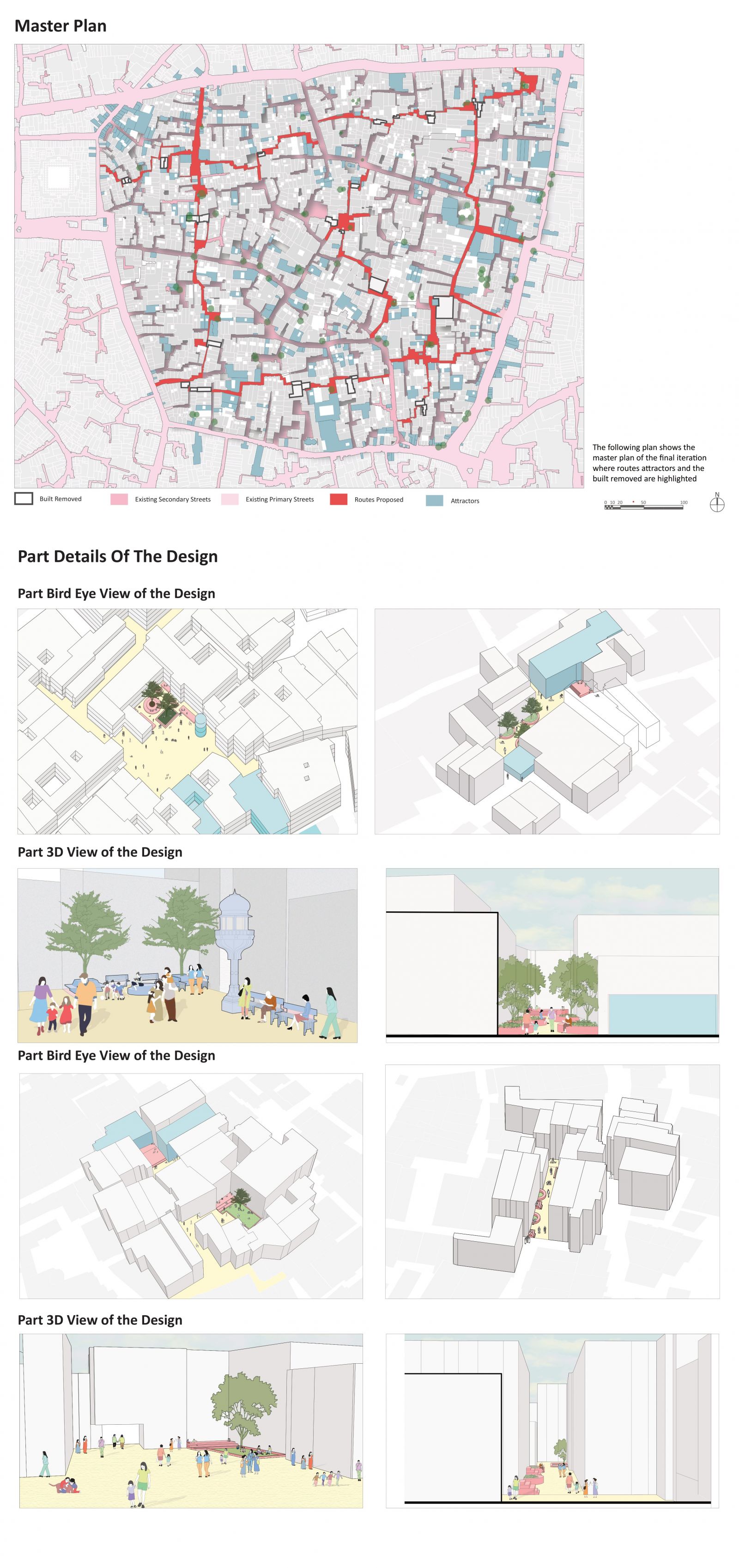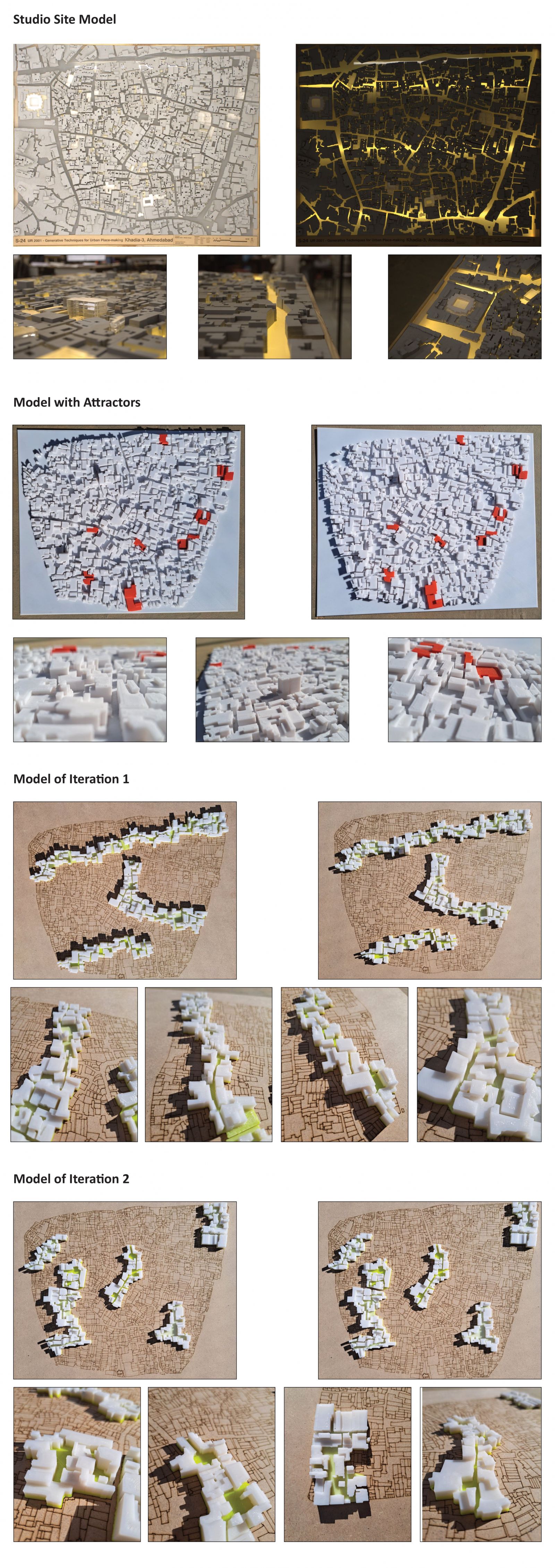Your browser is out-of-date!
For a richer surfing experience on our website, please update your browser. Update my browser now!
For a richer surfing experience on our website, please update your browser. Update my browser now!
In response to the challenges of congestion and conflicts between pedestrian and vehicular traffic in Khadia 3, a comprehensive urban design strategy has been developed to prioritize pedestrians and create safer, more accessible streets. This design concept aims to transform the existing urban fabric into a network of relief routes and pedestrian-friendly zones, punctuated with inviting pause points and green spaces. The design approach encompasses several key strategies, including the introduction of straighter routes connecting important streets, the division of large blocks into smaller ones to enhance physical permeability, and the integration of attractive destinations and open spaces along pedestrian pathways. By strategically altering built volumes and revitalizing existing chowks (intersections), the design seeks to optimize the use of space and improve connectivity for pedestrians. This introduction sets the stage for a detailed exploration of the proposed design strategies, highlighting their potential impact on alleviating congestion, enhancing pedestrian safety, and fostering a more livable urban environment in Khadia 3. Through collaborative planning, stakeholder engagement, and thoughtful implementation, this design concept aims to redefine the urban experience, making walking a more enjoyable and practical mode of transport within the community. and how they address the identified challenges in Khadia 3.
View Additional Work
